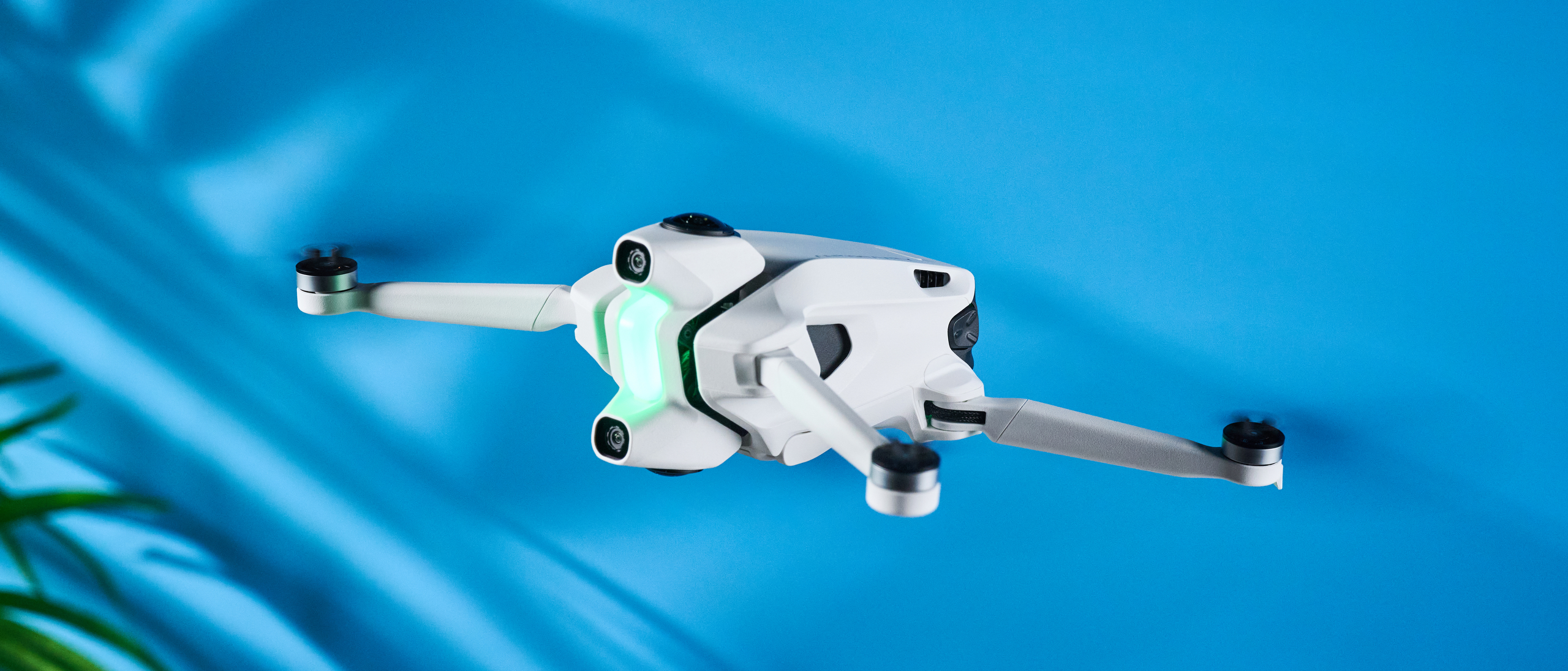The best VR headsets in 2025
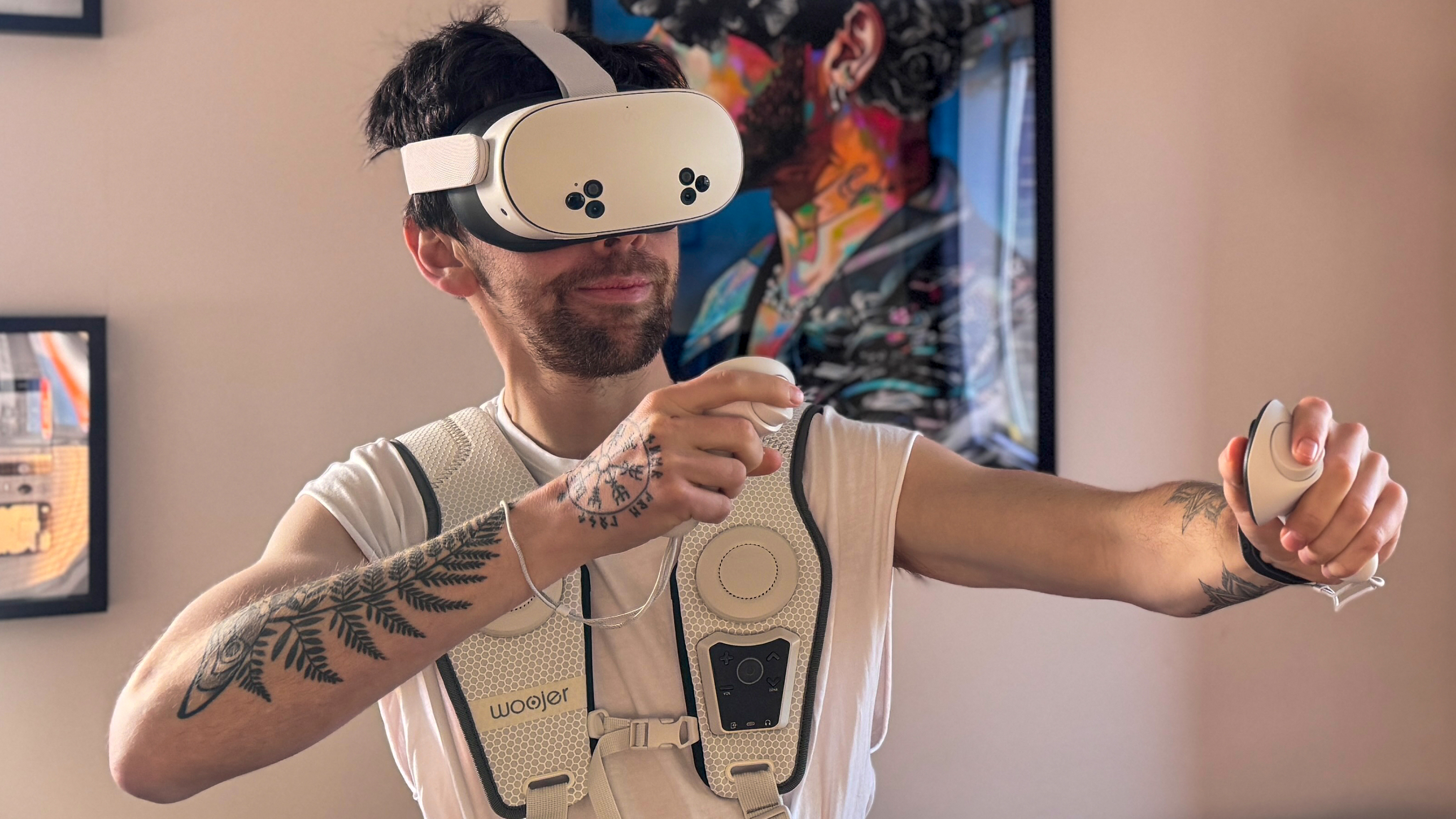
I've covered the best VR headsets for nearly ten years, and I've tested more sets than I can count, but only a few are actually worth your money. But being real, if you're here looking for the best all-rounder, nothing comes close to the Meta Quest 3S and Meta Quest 3.
That's not to say there aren't other options that are better for specific use cases, though! And luckily, I've tested plenty of these portals into a virtual world that I can point you in all the right directions.
M5 Apple Vision Pro is here: Apple has just announced the new Apple Vision Pro — same $3,499 price, same design, but drastically improved performance with M5 and the Dual Knit Band included in the box.
My top picks
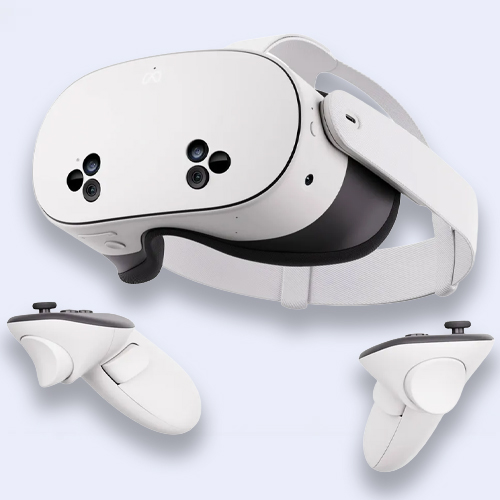
With all the power of a Meta Quest 3 with cost-cutting compromises that you'll be hard pushed to find (I certainly struggled), the Quest 3S is the best of both worlds — a quality VR headset with a ton of apps and games to use, priced incredibly well at $299 to make mixed reality properly affordable.
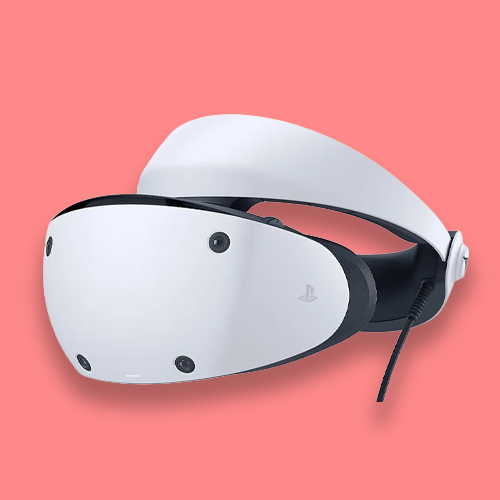
For the best AAA gaming experience, the PSVR 2 is the headset to choose. With a wide viewing angle and vivid, sharp OLED display technology, to sensational controller haptics and impressively accurate tracking, it brings a new way to interact with a ton of PS first party titles like Gran Turismo 7.
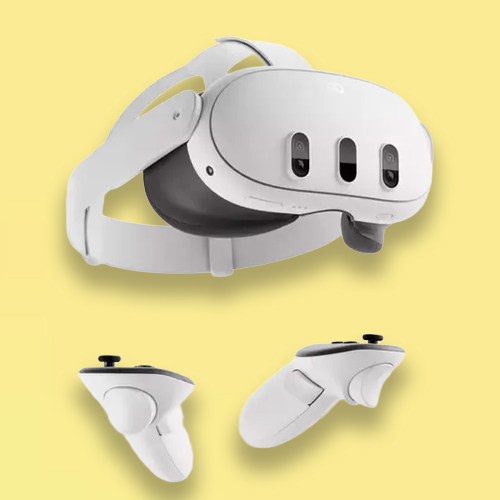
The Meta Quest 3 is virtually identical to the Quest 3S, but with a higher resolution display, pancake lenses for a crisper view, a wider field of view and a depth sensor for improved mixed reality. If picture quality and better tracking in a virtual space are critical to your buying decision, go for this.
What do I want to use VR for?
There are numerous use cases for picking up a VR headset, which we can use to focus your choices here:
Gaming: This is probably the most popular reason for buying a headset. If you're going down this route, the PSVR 2 is incredible for console VR experiences with a side-order of PC VR (thanks to the adaptor), or if you're PC-specific, the HTC Vive Focus Vision is a good shout.
Work and productivity: Spatial computing may not be quite ready for prime time yet, but that doesn't mean it isn't an amazing way to get stuff done. For this, both the Meta Quest 3 and Apple Vision Pro have all the capabilities.
Fitness: Fancy working out at home instead of going to the gym? Workout VR apps are incredible, and you'll need something with the ecosystem and lightweight construction for it. Go for the Meta Quest 3S.
All of the above: Maybe you don't fall into one camp. So for this, you need a good blend of everything — including a comfortable fit, wide field of view and display quality. And in terms of hitting all the categories, the Meta Quest 3 or Quest 3S are your best bets.
What about AR glasses?
I cover the best smart glasses too, and the display tech is getting better over time. We're not at that crossover point yet, but that hasn't stopped the likes of the Xreal One Pro giving you a similar big-screen spatial experience you'd find in a VR headset.
If portability is important, then this is a great way to go for watching movies, playing games or social experiences.
Now that we have a clearer idea of what you're looking for from your VR headset, here are the absolute best options you can buy right now.

Jason brings a decade of tech and gaming journalism experience to his role as a Managing Editor of Computing at Tom's Guide. He has previously written for Laptop Mag, Tom's Hardware, Kotaku, Stuff and BBC Science Focus. In his spare time, you'll find Jason looking for good dogs to pet or thinking about eating pizza (if he isn't already).
The best VR headsets you can buy today
Why you can trust Tom's Guide
The best VR headset overall

Reasons to buy
Reasons to avoid
The Meta Quest 3S is everything you could ever want from a VR headset — great color passthrough and speedy performance, a ton of apps to use and games to play, and all at a seriously affordable price.. This is why Tony Polanco has called it "the best VR headset for the money."
Are there cutbacks? Of course. This is a cheaper entry-level headset from Meta, but the team has been carefully strategic in its compromises, as to not massively impact the experience. For example, you get cheaper Fresnel lenses over pancake, along with a lower resolution display with a narrower viewing angle inside. I'd be lying if I didn't say you'd be hard pressed to notice these mid-action (except for the occasional bit of glare from those lenses).
Without a 3.5mm audio jack, you're left using the speakers on here. Don't get me wrong, they are good, but you're missing some of that bass emphasis through them.
Besides these, you're still getting that same Snapdragon XR2 Gen 2 processor that keeps all the latest and greatest experiences (such as Batman: Arkham Shadow) running smoothly, the mixed reality experience is mightily impressive, but continues to get better over time, and you'll be hard pushed to really notice that reduced display quality.
Oh, and if you wanted to dip into gaming, all your favorite cloud gaming services work so well on here (to the point that I'd choose this over an actual Xbox). For PC VR, that's just one Meta Quest Link cable away. Starting at $299, this is the best bang for your buck when it comes to getting started with the world of virtual reality.
See our full Meta Quest 3S review
The best premium VR headset
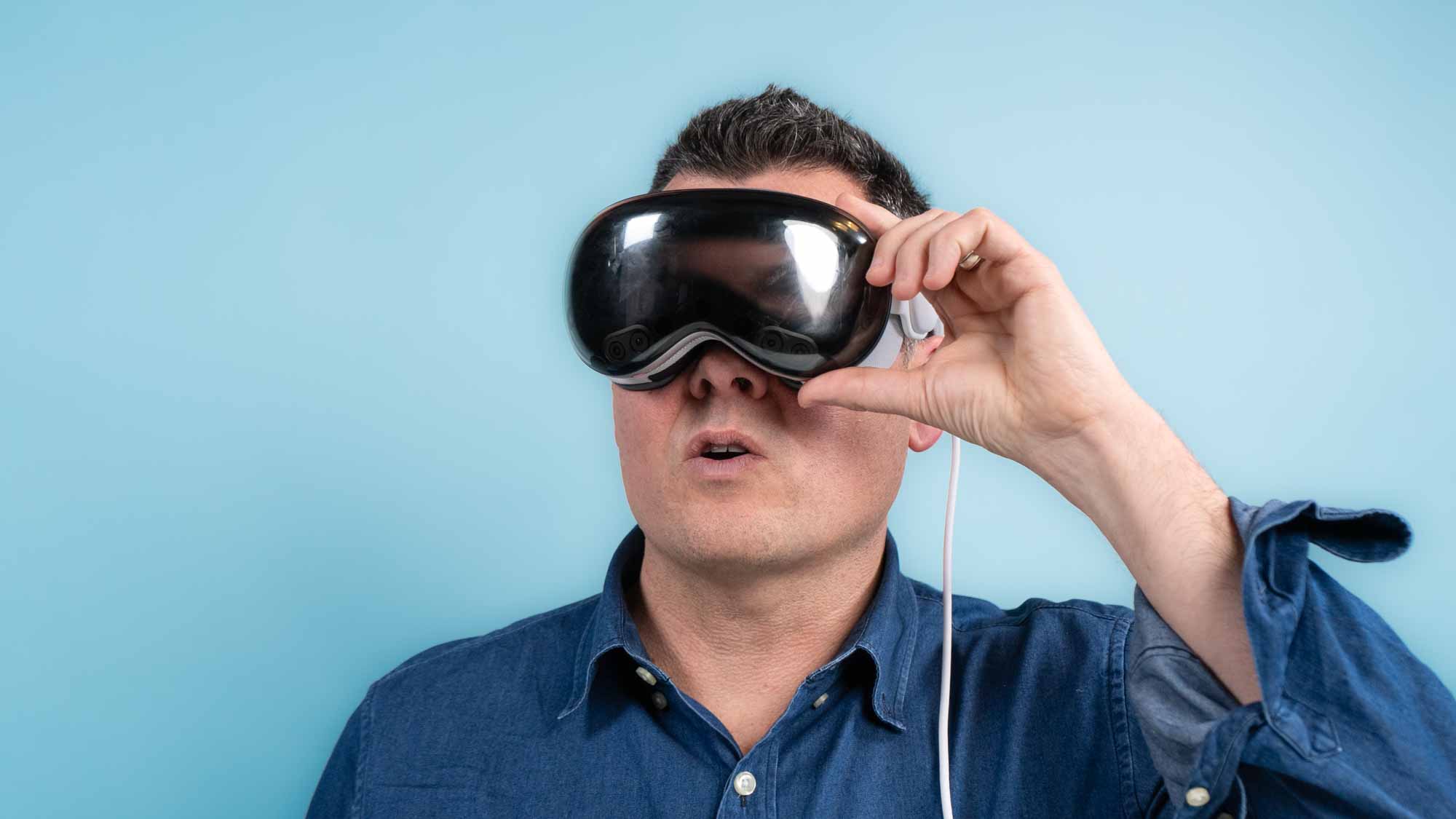
Reasons to buy
Reasons to avoid
Yes, the Apple Vision Pro is more mixed reality than truly VR, but that's the direction this whole category is heading in right now. And if you're looking out for the absolute best implementation of VR and AR technology (and cost is no obstacle), Cupertino's new headset is the best way to go.
Apple has tackled a lot of the common challenges for headsets with some truly great ingenuity in both hardware and software. For example, the microOLED displays with pixels smaller than red blood cells make for super sharp pass-through (with the lowest response time in the industry right now at just 12 milliseconds). On top of that, the futuristic eye and hand-tracking experience is head and shoulders above the tracking you can find in the competition.
And sure, there are some issues with it. Beyond that massive $3,500 asking price, the tethered battery can get in the way sometimes, personas during FaceTime calls are pretty weird to look at, and its missing some big apps like Netflix and YouTube (though the latter is coming soon).
But you're looking at the most innovative product to come out of Apple since the iPhone — being made even better with the incoming VisionOS 2 update. This is a revolution in the making, and it's certainly the technically superior VR/AR system of the bunch.
See our full Apple Vision Pro review.
The best standalone VR headset
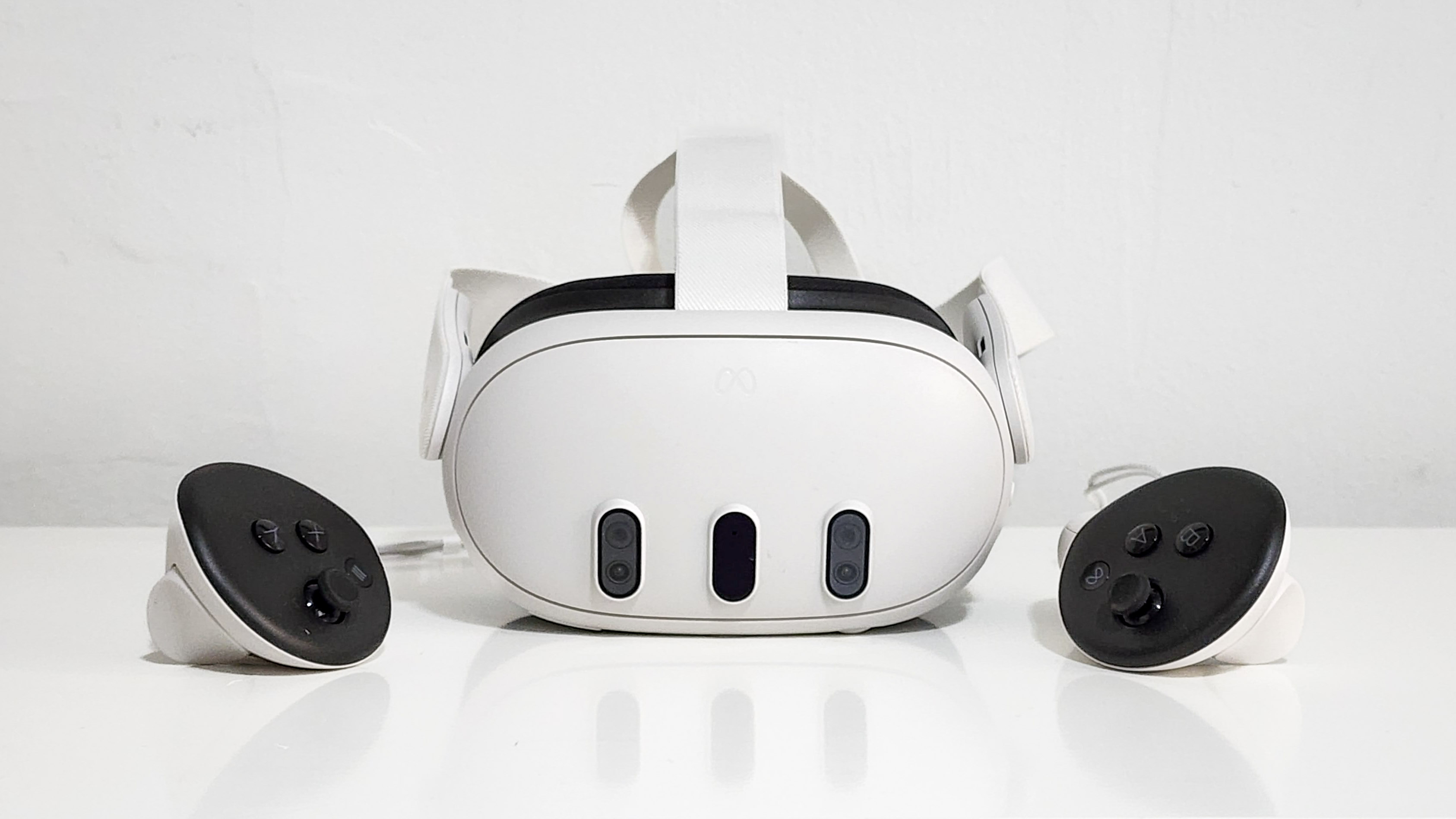

Reasons to buy
Reasons to avoid
The Meta Quest 3 "is undoubtedly the best VR headset I've ever tested" is the first line of our review of Meta's latest VR headset. While I'm inclined to agree over my years of owning one, the reasons to pick one over a Quest 3S come down to small improvements.
You're getting the same Snapdragon XR2 Gen 2 processor in here, the same breadth of app and game support, so why pick this one? Well it comes down to if you're willing to pay a little extra for the best standalone experience you can get in VR.
For example, there's a higher 2K resolution per eye for a combined 4K. Combine that with a wider 110-degree field of view and you're getting a more detailed picture that can be seen further into your peripheral vision. Is it something that most folks will notice? No, but it's all in the details.
Not only that, but there is also a depth sensor that the Quest 3S lacks, which lends itself to better fixed tracking of app windows in mid-air in front of you, pancake lenses that make for sharper optics without any light glare, a smooth IPD adjustment so you can tune it just right to your vision, and let's not forget the 3.5mm headphone jack.
That said, it's still not perfect. The battery life did not impress us — we managed to kill the battery in just under two hours.
But despite this shortcoming though, the Quest 3 is still a top choice. It's just an ultimate question you have to ask yourself. You will see and feel the spec bumps of this headset over the 3S, but is that worth an additional $200 to you? To a lot of people, I'd argue that you're better off going cheaper.
See our full Meta Quest 3 review.
The best gaming VR headset
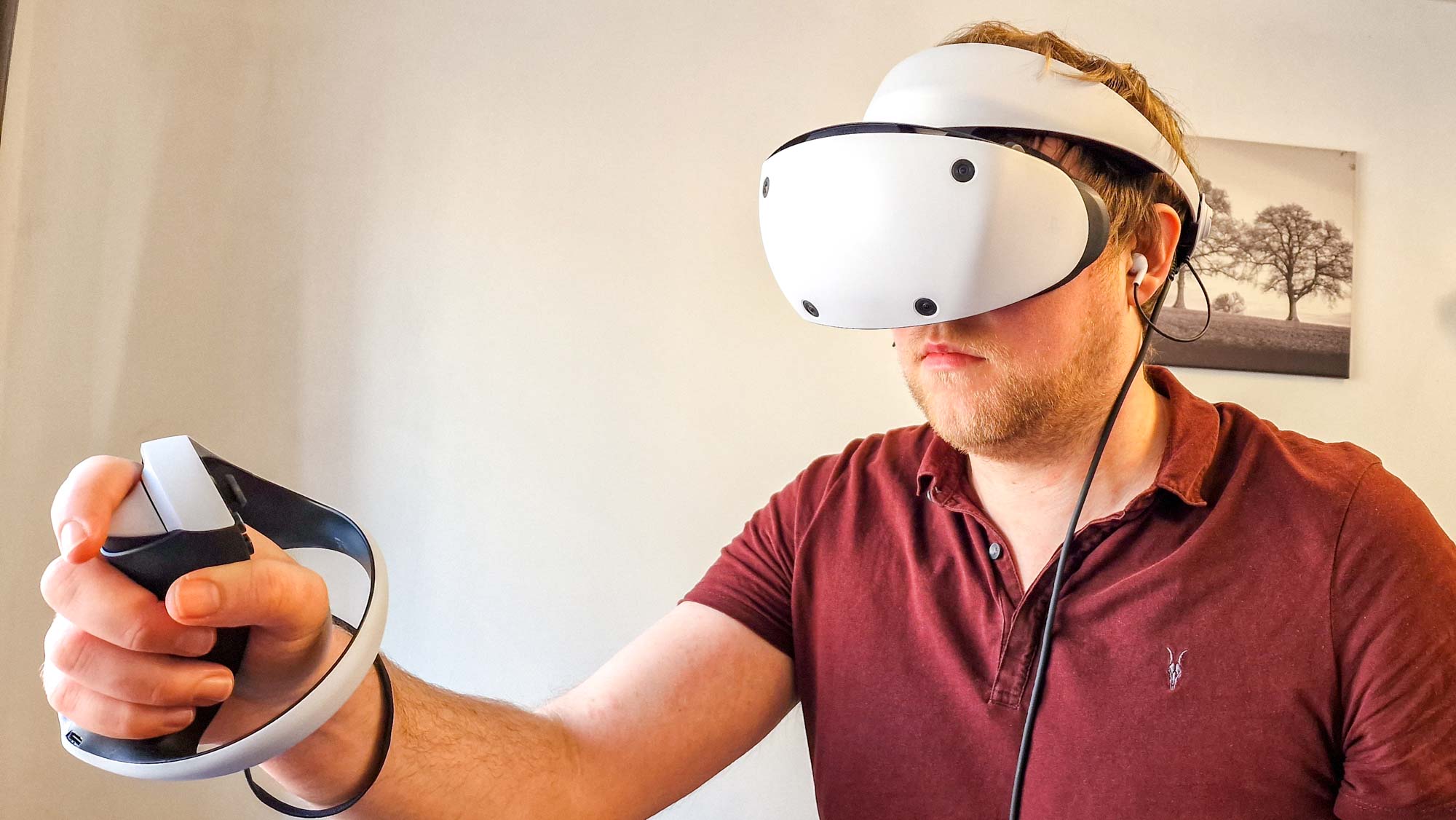

Reasons to buy
Reasons to avoid
Sony's new PSVR 2 is arguably the best wired VR headset, given it has a plethora of high-end specs, including a brilliant OLED display. But it sits behind the Quest 3 because it requires a PS5 to work and is limited to the PlayStation ecosystem. Plus the gap between the Quest 3 and PSVR 2 is much smaller than the gap between the Quest 2 and the PSVR 2 thanks to a new processor and display on the Quest 3.
Still, the PSVR 2 is excellent, especially for gaming. The headset is comfortable with just a relatively slim but sturdy cable that connects it to the PS5, the screen is excellent with impressive passthrough capabilities and 4K resolution. Plus, there's 3D audio support and easy buttons for adjustment.
But the real ace-in-the-hole is the Sense controllers. These are not only rather comfortable and good at tracking, but they also have excellent haptic feedback; an area where other VR headsets are lacking.
And thanks to being in the PlayStation ecosystem there are exclusive games like Horizon Call of the Mountain and the ability to play Gran Turismo 7 in VR. Combined with the VR tech, the PSVR 2 is one of the very best virtual reality systems you can buy today.
See our full PlayStation VR2 review.
The best PC VR headset
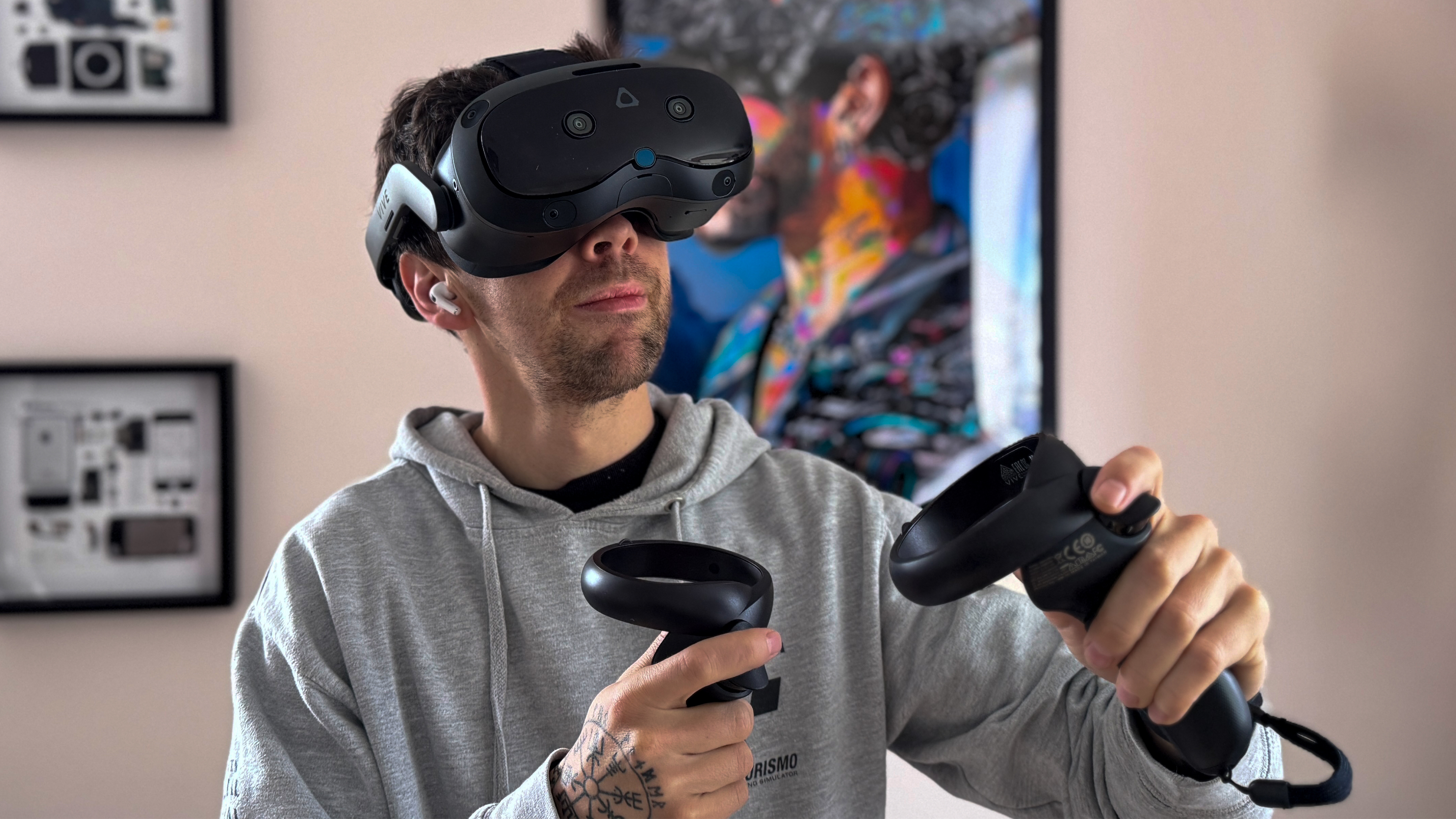
Reasons to buy
Reasons to avoid
The HTC Vive Focus Vision is a $999 mixed-reality headset that works best as part of a PC VR setup. With that sharp 5K display with a 120-degree field of view and a comfortable fit for long sessions, it's an impressively immersive experience.
Add in strong eye and hand tracking, alongside hot swappable batteries, and this really comes into its own in the PC gaming space.
However, I was surprised to see it using the older Snapdragon XR2 chipset, the same as the Quest 2, which limits its performance in standalone mode. Pair that with the limited software library compared to the Quests, and standalone can be a rather lonely experience. Oh, and the choice to use Fresnel lenses also feel a little outdated, causing some edge distortion and chromatic aberration.
So if you're main mission is to get a headset specifically for your PC VR gaming, plugging this in via DisplayPort is an awesome high-quality experience — ideal for enthusiasts and pros. But if you're looking for something more multi-purpose, I'd reconsider.
See our full HTC Vive Focus Vision review.
The best AR Glasses alternative
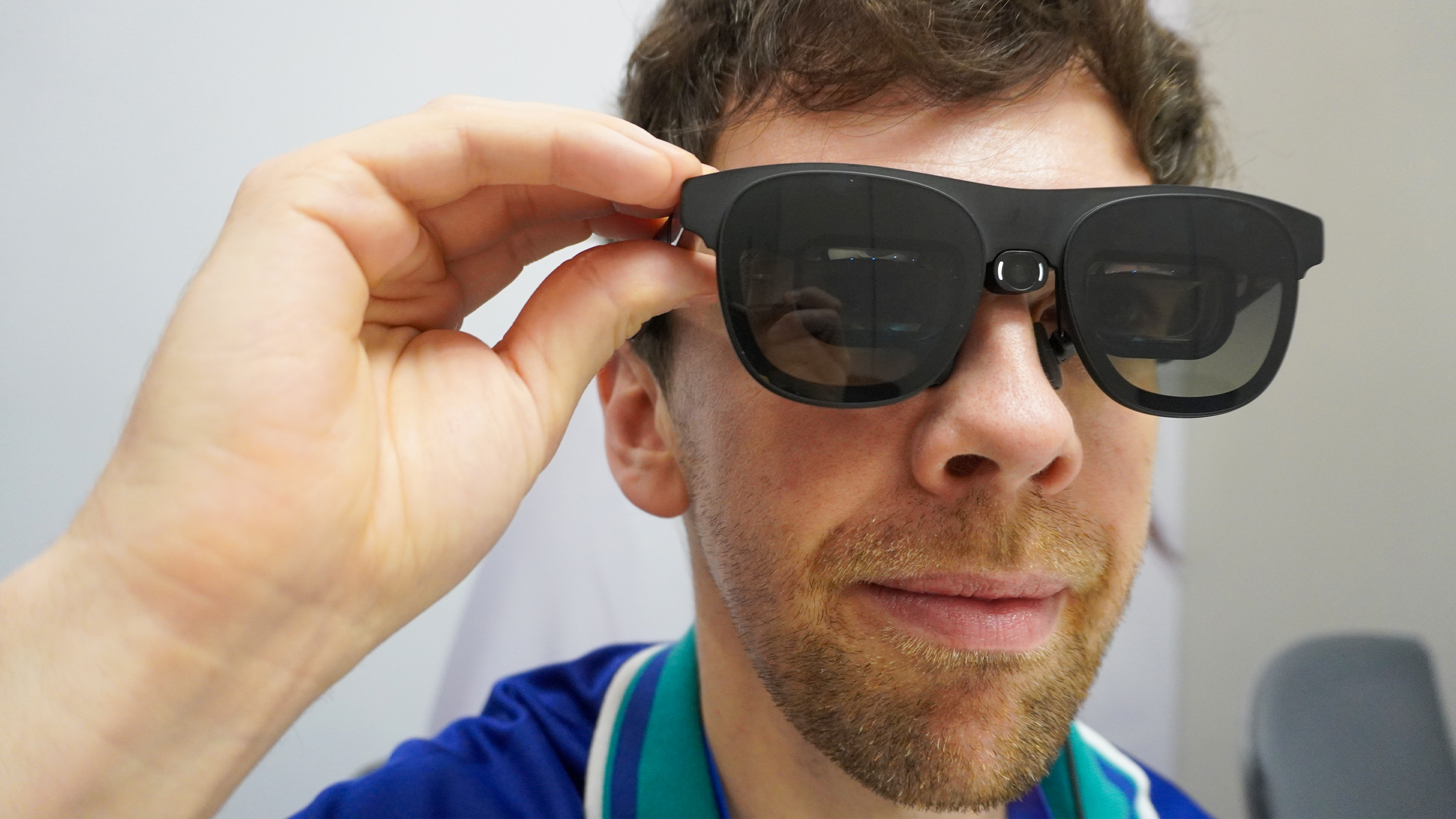
Reasons to buy
Reasons to avoid
As we continue on a collision course between AR glasses and VR headsets, the Xreal One Pro stand tall as the specs that come the closest to your average bulky headset right now. The key factors to look out for are a wide field of view and built-in capabilities for DoF tracking (degrees of freedom to keep a virtual screen locked in place), and these nail all those points.
In fact, I'd argue that it's close enough that it could convince some of you to veer away from a headset. The field of view is still quite a ways off VR headsets, but at 57 degrees, it's plenty immersive for using at home or on-the-go.
Plus, for that additional hint of spatial computing, there's the X1 chip built-in. A lot of AR glasses will do all of their spatial trickery through software when connected to a device, but this does it entirely in hardware. That means you can have a fully simulated 32:9 ultrawide display right in front of you — locked so you could look away from it just like on a headset.
Of course there are limitations. No actual computer on-board means you don't get fresh apps or games on the device itself (it's not standalone), and at $649, this is a pricey purchase. But if you're looking for an ultraportable spatial station for work and play, this is a the one that comes closest to VR.
Oh and by the way, upgrade it with the Xreal Beam Pro to get an Apple Vision Pro-esque UI to interact with games, apps and movies/TV.
See our full Xreal One Pro review.
How we test VR headsets
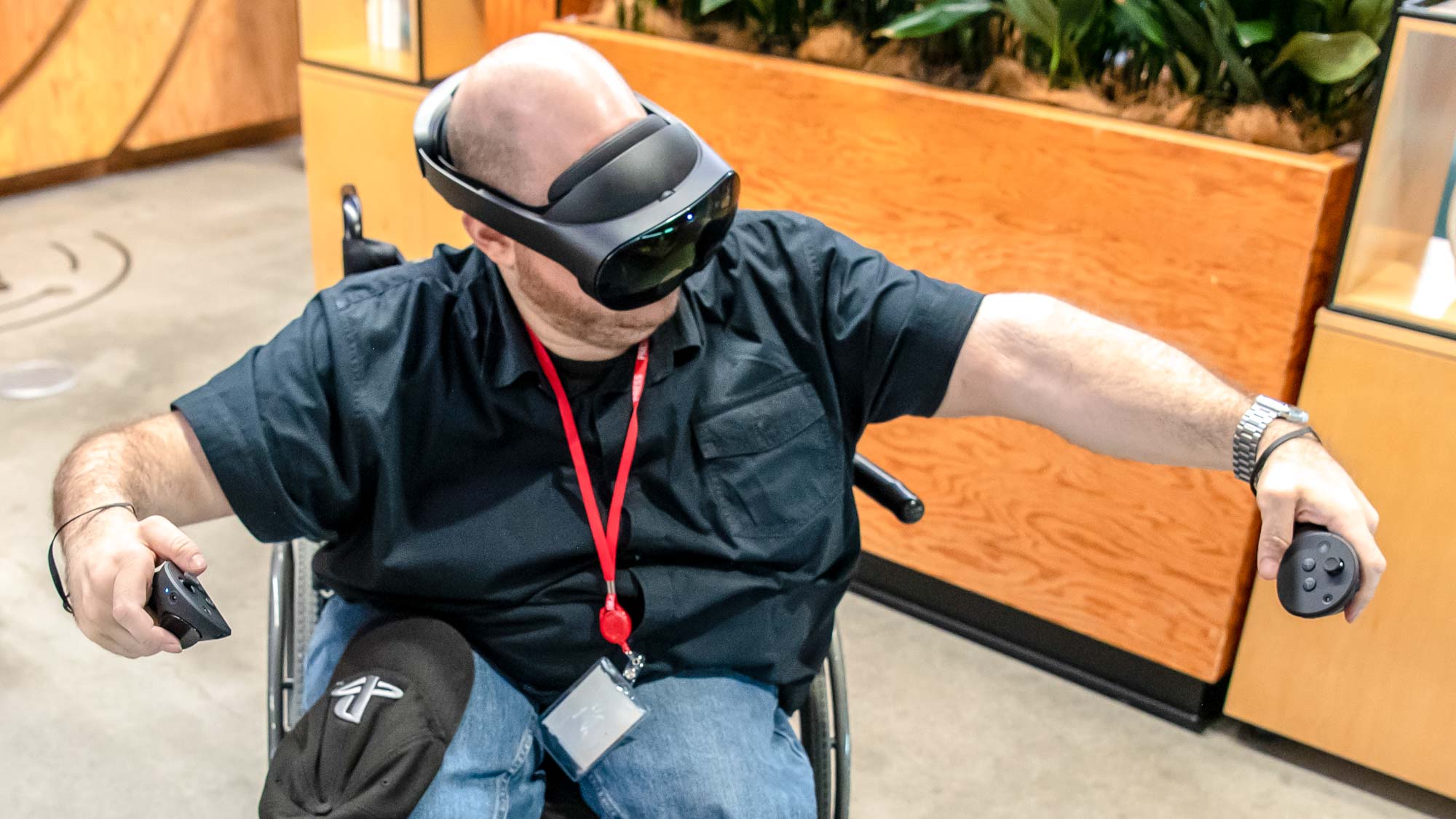
Identifying the best VR headsets takes a suite of things to consider, from the hardware itself to the software the headsets will work with. We test and consider how easy it is to set up a VR headset and system, how well-designed and comfortable the headset is, how well its interface works, and take a look at the accessories the VR headset can use.
We also take a look at how specific VR headsets work such and how easy the interface to use, as well as how head tracking performs and the quality of the controllers with the headsets.
A major part of initial testing involves evaluating how much space is needed to set up one of our picks for the best VR headsets to get the most out of them.
A product can look great but still be uncomfortable to use. Aside from testing out all the various content, we spend at least 30 minutes wearing each headset. We test to make sure any embedded air vents are keeping things cool. And if it does get sweaty, we see how well the face guard wicks away moisture. We also weigh the headsets, because even the lightest gadget can feel heavy after long periods of use. Finally, we test how adjustable the head straps are and how secure they feel.
As the de facto face of your virtual experience, the interface is vitally important. We test how responsive and intuitive the home page and subsequent menus are, as well as test special features, like voice commands and gesture control.
Whether it's a traditional gamepad or something more elaborate, like Meta's controllers, we're checking to see if the input devices are ergonomically designed; after all, no one wants hand cramps. We also test tracking and responsiveness in a number of games.
Hardware without great software is just an expensive paperweight. We not only examine the size of a device's library but also scour the listings and test out some of the higher-end apps and titles. At this point, a good library should feature a number of games, apps, movies and other experiences.
Get instant access to breaking news, the hottest reviews, great deals and helpful tips.

Jason brings a decade of tech and gaming journalism experience to his role as a Managing Editor of Computing at Tom's Guide. He has previously written for Laptop Mag, Tom's Hardware, Kotaku, Stuff and BBC Science Focus. In his spare time, you'll find Jason looking for good dogs to pet or thinking about eating pizza if he isn't already.
